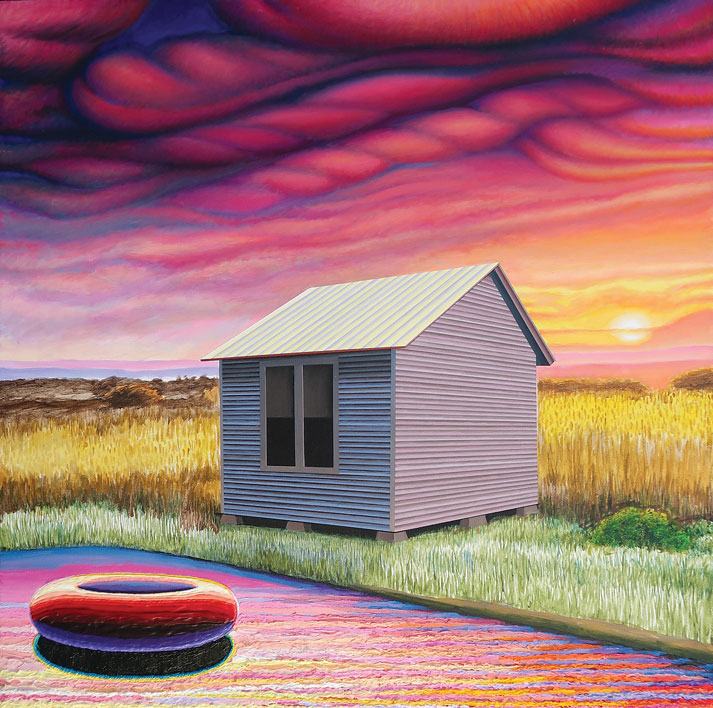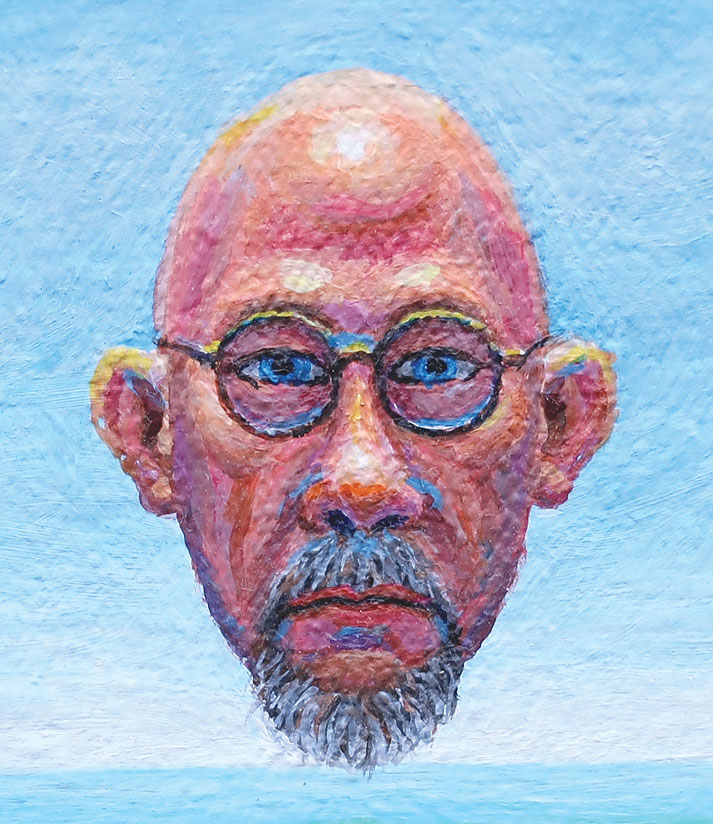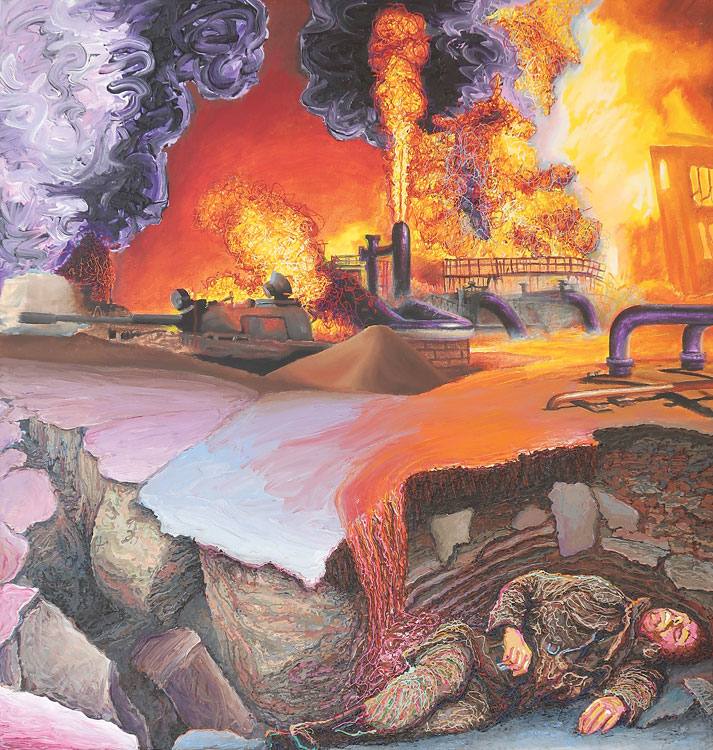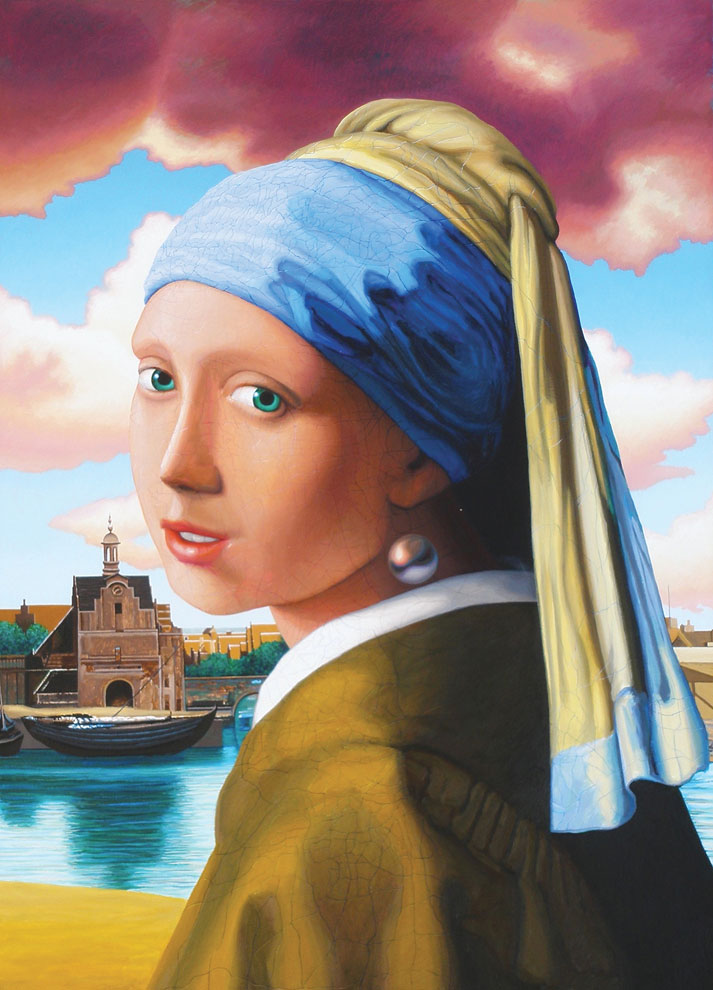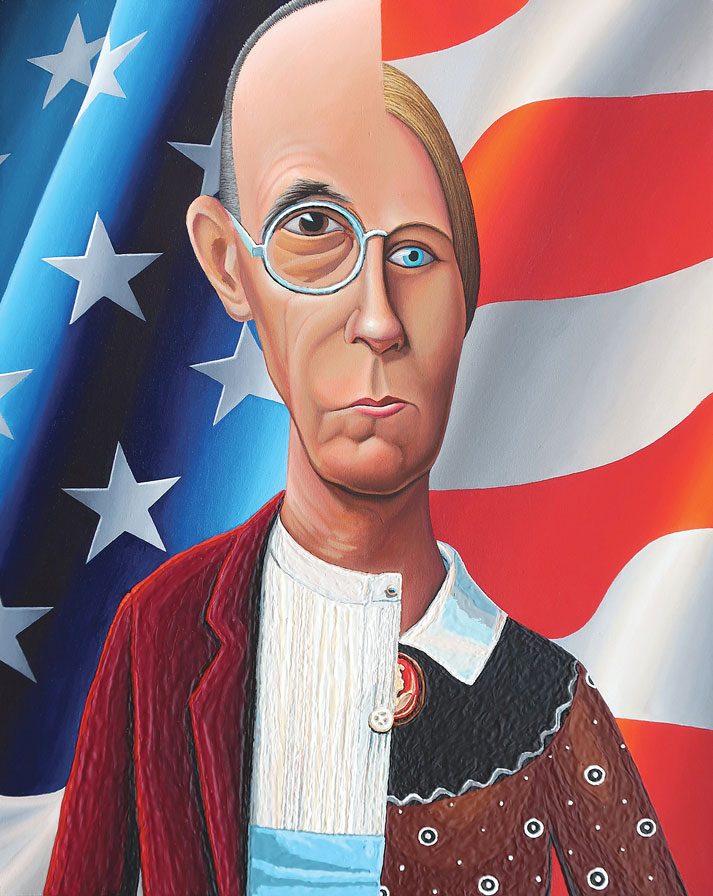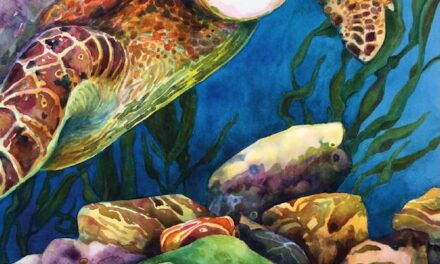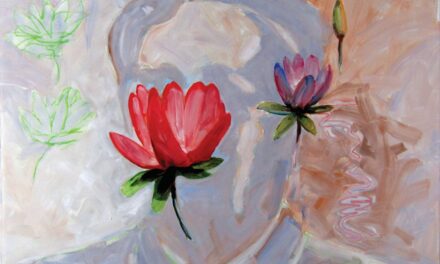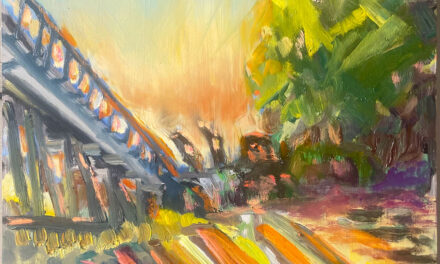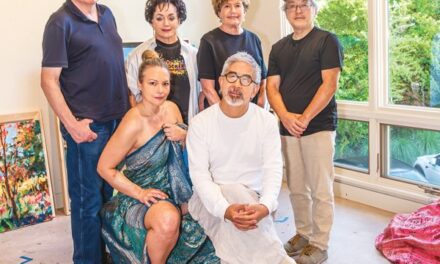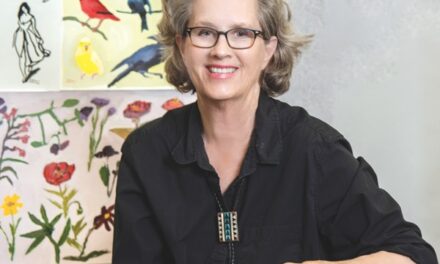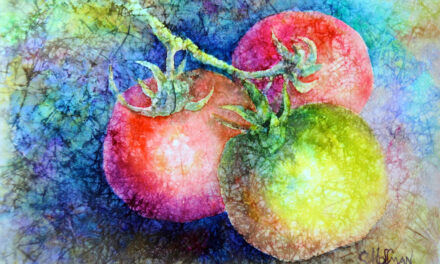When Dan Samborski retired from American River College after teaching studio art and art history for 32 years, he was offered a retirement party or a retrospective exhibition at the on-campus James Kaneko Gallery.
He chose the exhibition.
Cheekily called “The End of Painting,” the retrospective offered a chance to create a catalog to send to museums. It also let Samborski gather his work into one collection that spans four decades, from 1983 to the present.
“When I saw all of (the paintings) together in the room, I thought, Wow, is it in focus,” Samborski says.
His work is illustrative of the word “vivid.” His subject matter borrows from styles, themes and artists throughout history, with a Samborski twist—juxtaposed images, bright colors, thick textures and provocative titles that reference other artworks.
“I call myself very analytical for an artist,” he says. “My work is full of a dozen or more historical styles, which are a summation of my life experiences.
“When I lived in Wisconsin, I would go to the Art Institute of Chicago every few years to see the Picassos to make sure they were still not good. They were powerful pieces and I didn’t understand them. Picasso frustrated me when I was younger, but now I do nothing but steal from him.”
Samborski’s work is challenging, visually arresting and playful. He uses oil and acrylic paint in layers to make work that was referred to in grad school at Sacramento State as “two-and-a-half dimensional” because of its built-up surface. He starts with an underpainting where he experiments with color and imagery, often in collage form.
“I don’t know what’s going to work but I know what doesn’t, so I eliminate bad ideas,” Samborski says. “If you had an X-ray machine, you’d see all those past efforts that didn’t quite work.”
That process of elimination produces unique compositions—what he calls “impossible worlds” in the catalog—that beg to be looked at more than once. Many of his collectors say they love his paintings more the longer they live with them.
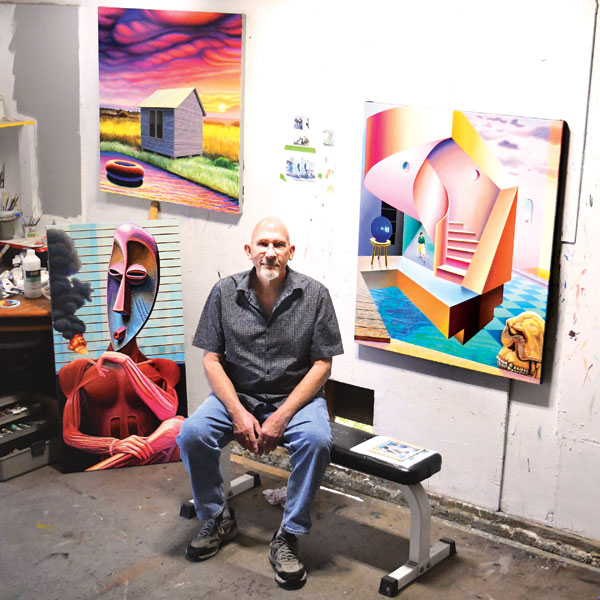
For the artist, it’s all about holding his own attention.
“I have to be interested in the moment and in the long run,” Samborski says. “Sometimes it takes years to finish one painting, and each time I make another one, it has to go a little further than the last one.”
Samborski encouraged similar personal growth in his American River College students.
“I loved the independence of the classroom. It was my invention, just like the paintings,” he says. “The students would hate me at first but loved me by midterm because I gave them skills. My guarantee was, I’m going to make you much better at this, but you have to do what I say.”
Samborski is beloved by students and collectors. He sells well locally—“My art habit has always paid for itself,” he says—but he’s determined to expand his audience post-retirement. He hopes to land in a museum and “add a zero” to his prices.
But even when museums call, Samborski will remain dedicated to art that provokes and inspires.
“I don’t think it makes sense to make work that only artists or museum directors understand,” he says. “I want everyone to have some relationship with it, to see and recognize and have an experience with it. Paintings are portals and open to interpretation. What you bring to it will affect what you take away from it.”
Jessica Laskey can be reached at jessrlaskey@gmail.com. Follow us on Facebook and Instagram: @insidesacramento.



